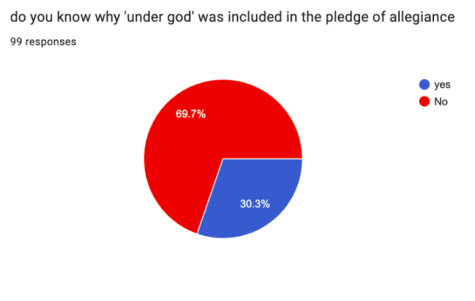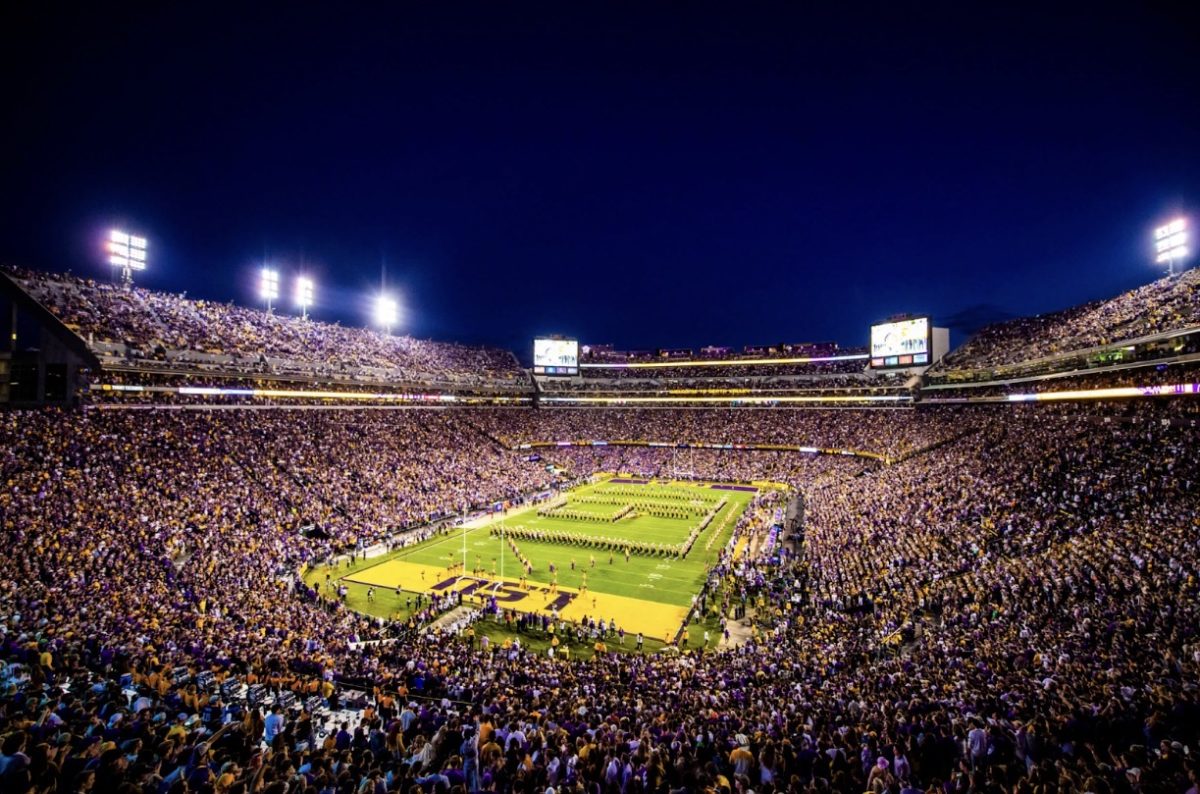The Pledge of Allegiance: A Historical Lense
March 12, 2023
It’s broadcasted daily at every public school in Illinois, heard by students standing with their right hand over their heart or sitting in their seats silently.
“I pledge allegiance to the flag of the United States of America and to the Republic for which it stands, one nation under God, indivisible with liberty and justice for all.”
The Pledge of Allegiance has been an essential part of the school day in Illinois since 2002, when the state passed a law making the pledge mandatory in public secondary schools.
However, the constitutionality of requiring students to recite The Pledge of Allegiance continues to be challenged today: whether it violates the First Amendment, the authorization of the 1954 inclusion of the words “under God” in it or whether states should require it to be said during the school day.
The History of the Pledge of Allegiance
The Pledge of Allegiance has existed since 1892, when socialist minister Francis Bellamy penned it in honor of the 400th anniversary of Christopher Columbus’s voyage to America.
Its original lines differ from the pledge students currently recite today: “I pledge allegiance to my Flag and the Republic for which it stands, one nation, indivisible, with liberty and justice for all.”.
The President at the time, President Benjamin Harrison, declared that October 21 should be an official day to honor Columbus, and that the pledge should be recited in public schools as a main point of celebration.
On October 21, 1892, the ‘Pledge to the Flag’, as it was called, was recited by an estimated 10 million children for the first time.
Children were instructed to stand facing the flag with their hands to the side, and then give the flag a military salute with their “right hand lifted, palm downward, to a line with the forehead and close to it.”.
The arm-extended flag salute was how the Pledge was conducted in American public schools until the height of World War II in 1942, when its similarity with the Nazi salute became uncomfortable; it was then changed to just keep a hand over the heart.
‘Under God’ Inclusion in the Pledge
It can be noticed that the words ‘Under God’ do not appear in the original Pledge to the Flag. These two words were added by President Dwight Eisenhower in 1956 during the Cold War.
According to https://www.history.com/news/, “The push to add ‘under God’ to the pledge gained momentum during the second Red Scare, a period when U.S. politicians were keen to assert the moral superiority of U.S. capitalism over Soviet communism, which many conservatives regarded as ‘godless’.”
However, this new legislation was challenged not even a decade later, brought to the Supreme Court with the concern of whether the inclusion of ‘Under God’ violated students’ and staffs’ rights.
Results from an anonymous survey taken by 100 students at Glenbard South High School show that 69.7% of students do not know why ‘Under God’ was included within the Pledge.
When asked to anonymously share their opinions on this topic, many believed it was unnecessary, while many believe it is a crucial part of respecting American ideals.
One student stated, “The way this specific phrase is implemented in our classrooms across the country is terribly out of date and discriminatory toward people of other faiths. At this point, it’s just ridiculous and really further illustrates the inconsiderate and insensitive nature of our country.”
Another student voiced, ““I understand that Christian roots were the basis of this country’s moral doctrine, and I don’t think those roots are inherently flawed. Nevertheless, I could understand how the reference to “God” in the pledge of allegiance could pose a problem for those who do not believe in a god. I think this is one of the many (valid) reasons that the pledge is not mandatory for all students, and I have no strong opinions on the matter.”
Another student simply said, ““I think it’s dumb because America doesn’t have one religion, and not all people believe in god.”
Legal Challenges With ‘Under God’
After the Eisenhower administration added ‘Under God’ to the Pledge of Allegiance in 1954, many new lawsuits occurred concerning whether it violated students’ and staffs’ rights.
In 1940, the Minersville School District v. Gobitis case arose. Siblings Lillian and William Gobitis were expelled from their public school in Pennsylvania for refusing to salute the flag; the Gobitis children were Jehovah’s Witnesses, and believed that saluting or pledging to the flag was against their religion. Their father sued on behalf of the children, saying the district’s policy violated his children’s religious freedom.
In this case, the Supreme Court decided 8-1 in favor of the school policy, ruling that the government could require respect for the flag as a symbol of national unity. The Court stated that the Pledge of Allegiance helps “to evoke that unifying element without which there can ultimately be no liberties, civil or religious. Exempting the Gobitis children makes others less loyal to the country. National unity is the basis of national security.”
However, a few years later, the Court overrode this decision in the 1943 Supreme Court Case West Virginia Board of Education v. Barnette. They said that public education should “not strangle the free mind at its source [or] teach youth to discount important principles of our government as mere platitudes.”
The Court reversing their decision in the Gobitis case established the notion that students possess the rights of the First Amendment too.
The Pledge of Allegiance in Illinois
Currently, 47 states in the United States require The Pledge of Allegiance to be said in public schools, with varied consequences for those who don’t participate.
This is a result of the 1943 Supreme Court Case West Virginia Board of Education v. Barnette, as mentioned in the previous section.
This overturned decision signified that no school or government can force someone to salute the flag or recite the Pledge, according to the Washington newspaper, The Hill, “States can still require it [The Pledge of Allegiance] while offering exemptions. And states have varying levels of exemptions- for example, Florida and Texas allow for a student to be exempted from reciting the Pledge of Allegiance only if a parent or guardian consents.”
Illinois law requires that the Pledge of Allegiance still be recited, with no clear exemptions or consequences if it’s not.
Links Used:
- https://bensguide.gpo.gov/liberty-bell-1753/35-age-4/apprentice-symbols-of-us-government/86-pledge-of-allegiance-1892
- https://thehill.com/homenews/3256719-47-states-require-the-pledge-of-allegiance-be-recited-in-schools-here-is-a-breakdown-of-each-states-laws/

results from an anonymous survey about the pledge of allegiance conducted by sana muneer






























